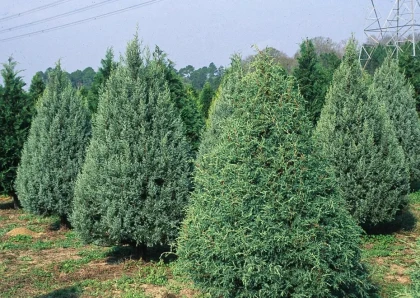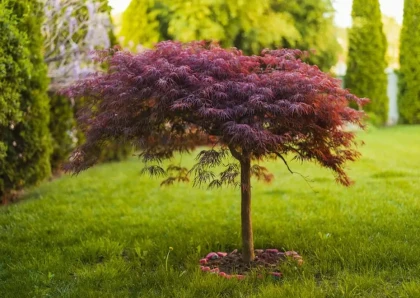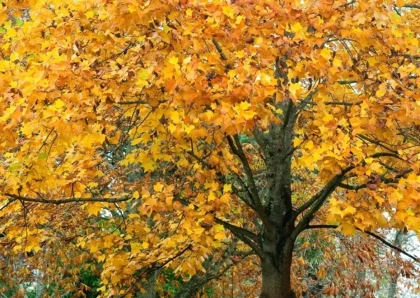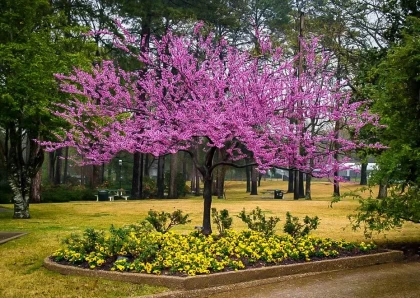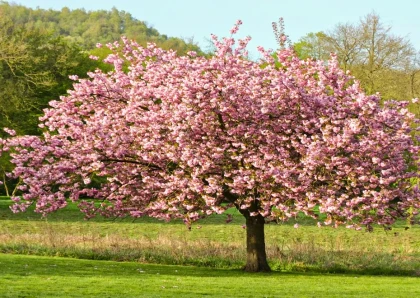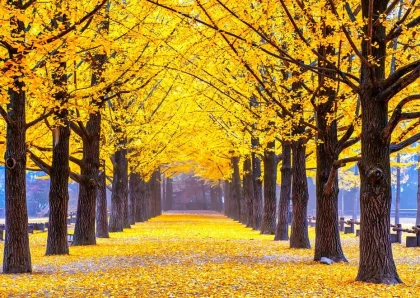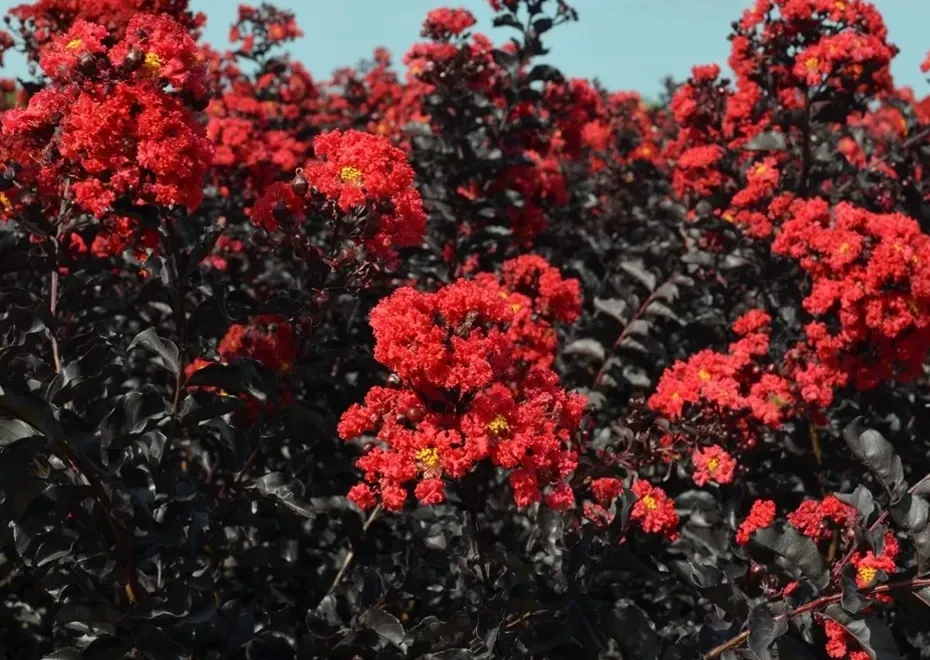
Black Diamond Best Red Crape Myrtle Tree
Overview
History of the Tree
The Black Diamond® Best Red™ Crape Myrtle (Lagerstroemia indica 'Gamad VI') is a stunning cultivar that belongs to the Crape Myrtle family. It was developed by renowned plant breeder Carl Whitcomb and introduced in the early 2000s. This variety was specifically bred for its vibrant red flowers and deep purple foliage, making it a popular choice among gardeners and landscaping enthusiasts.
Detailed Description of the Tree
The Black Diamond® Best Red™ Crape Myrtle is deciduous, small to medium-sized tree that typically grows to a height of 10 to 12 feet (3 to 3.6 meters) with a spread of 8 to 10 feet (2.4 to 3 meters). It has a compact and upright growth habit, forming a rounded canopy of richly colored foliage. The leaves emerge as a deep purple color, creating a striking contrast against the vibrant red flowers that appear in large clusters during the summer months. As the seasons progress, the foliage transitions to a dark green shade, maintaining its visual appeal.
Types of This Tree
The Black Diamond® series of Crape Myrtle trees offers a range of color options and growth habits. Apart from the Best Red™ variety, other popular Black Diamond® cultivars include Pure White™, Shell Pink™, Blush™, and Red Hot™. Each variety in the series showcases unique flower colors and foliage characteristics, allowing for diverse landscape designs.
Importance of This Tree
The Black Diamond® Best Red™ Crape Myrtle holds several important qualities:
- Ornamental Beauty: With its vibrant red flowers and deep purple foliage, this tree is highly valued for its aesthetic appeal. It adds a striking focal point to gardens, landscapes, and urban environments.
- Extended Blooming Period: The Best Red™ variety blooms for an extended period during the summer, providing a long-lasting display of vibrant color when many other plants have finished flowering.
- Drought Tolerance: This cultivar exhibits excellent drought tolerance once established, making it suitable for regions with limited water availability.
How to Care for This Tree
To ensure the healthy growth of the Black Diamond® Best Red™ Crape Myrtle, consider the following care guidelines:
- Plant the tree in well-drained soil and choose a location that receives full sunlight for optimal flower production.
- Water the tree regularly, especially during the first few years after planting, to help establish a strong root system. Once established, it can tolerate some drought conditions.
- Apply a layer of organic mulch around the base of the tree to help retain moisture, suppress weed growth, and regulate soil temperature.
- Prune the tree during late winter or early spring to remove any dead or damaged branches and to promote a more compact and balanced growth habit.
- Fertilize the tree in early spring with a balanced slow-release fertilizer specifically formulated for flowering trees to encourage healthy growth and abundant blooms.
Benefits of the Tree
The Black Diamond® Best Red™ Crape Myrtle offers several benefits:
- Striking Visual Appeal: Its vibrant red flowers and deep purple foliage create a dramatic and eye-catching display in any landscape.
- Extended Bloom Time: The tree's prolonged blooming period ensures an extended period of color and beauty in the garden or landscape.
- Low Maintenance: This cultivar is relatively low maintenance once established and requires minimal pruning and fertilization.
- Pollinator Attraction: The abundant flowers attract pollinators, such as butterflies and bees, enhancing biodiversity in the garden.
How to Plant This Tree
Follow these steps to successfully plant a Black Diamond® Best Red™ Crape Myrtle tree:
- Choose a planting location with well-drained soil and full sunlight exposure.
- Dig a hole that is slightly wider and as deep as the root ball.
- Place the tree in the hole, ensuring the root ball is level with or slightly above the ground surface.
- Backfill the hole with soil, gently firming it around the roots to eliminate air pockets.
- Water the tree thoroughly after planting and regularly during the first year to aid in establishment.
Different Types of Wood Products That Can Be Made From
Crape Myrtle wood is not typically used for commercial purposes due to its small size. However, it can be utilized for small woodworking projects, such as crafting decorative items, small furniture pieces, and artistic carvings.
Cons
While the Black Diamond® Best Red™ Crape Myrtle is highly regarded, there are a few considerations to keep in mind:
- Susceptibility to Powdery Mildew: Like many Crape Myrtle varieties, this cultivar may be prone to powdery mildew, a fungal disease that can affect the foliage. Proper spacing, good air circulation, and appropriate pruning techniques can help prevent or minimize the occurrence of this disease.
- Limited Cold Hardiness: The Best Red™ variety is generally suitable for USDA hardiness zones 7-10. In colder regions, it may require additional protection or may not survive harsh winter conditions.
FAQs
1. Can the Black Diamond® Best Red™ Crape Myrtle tolerate partial shade?
While the Black Diamond® Best Red™ Crape Myrtle prefers full sunlight for optimal flowering, it can tolerate some partial shade. However, a sunnier location will promote better flower production.
2. How tall does the Black Diamond® Best Red™ Crape Myrtle grow?
The Black Diamond® Best Red™ Crape Myrtle typically reaches a height of 10 to 12 feet (3 to 3.6 meters) with a spread of 8 to 10 feet (2.4 to 3 meters). However, actual size may vary depending on growing conditions and pruning practices.
3. How often should I fertilize the Black Diamond® Best Red™ Crape Myrtle?
Fertilize the tree once a year in early spring with a slow-release, balanced fertilizer formulated for flowering trees. Avoid excessive fertilization, as it can lead to excessive foliage growth at the expense of flower production.
4. Can I grow the Black Diamond® Best Red™ Crape Myrtle in a container?
While it is possible to grow the Black Diamond® Best Red™ Crape Myrtle in a container, it is important to select a large container with adequate drainage and provide proper care, including regular watering and appropriate fertilization. Container-grown trees may have smaller sizes compared to those planted directly in the ground.
No listings available
Related Products
Questions & Answers
What do you want to know about this product?
Reviews (5)
BlossomMaster87
A Showstopper in my Garden
The Black Diamond Best Red Crape Myrtle is a vibrant and striking addition to my landscape. Its deep red flowers steal the show!
GardenEnthusiast42
A Gorgeous Focal Point
The Best Red Crape Myrtle's intense red flowers and dark purple foliage create a stunning centerpiece in my garden. I'm in awe!
LeafWhisperer77
Year-Round Elegance
With its beautiful red blooms and rich purple leaves, the Best Red Crape Myrtle adds elegance and color to my garden throughout the seasons.
PetalExpert99
Burst of Red Delight
The Best Red Crape Myrtle's bold red flowers create a vibrant and cheerful atmosphere in my yard. It's a must-have for any garden lover!
ArboristExtraordinaire99
Captivating Beauty in my Landscape
The Best Red Crape Myrtle's radiant red blooms are simply mesmerizing. Its striking presence adds a touch of magic to my outdoor space.





